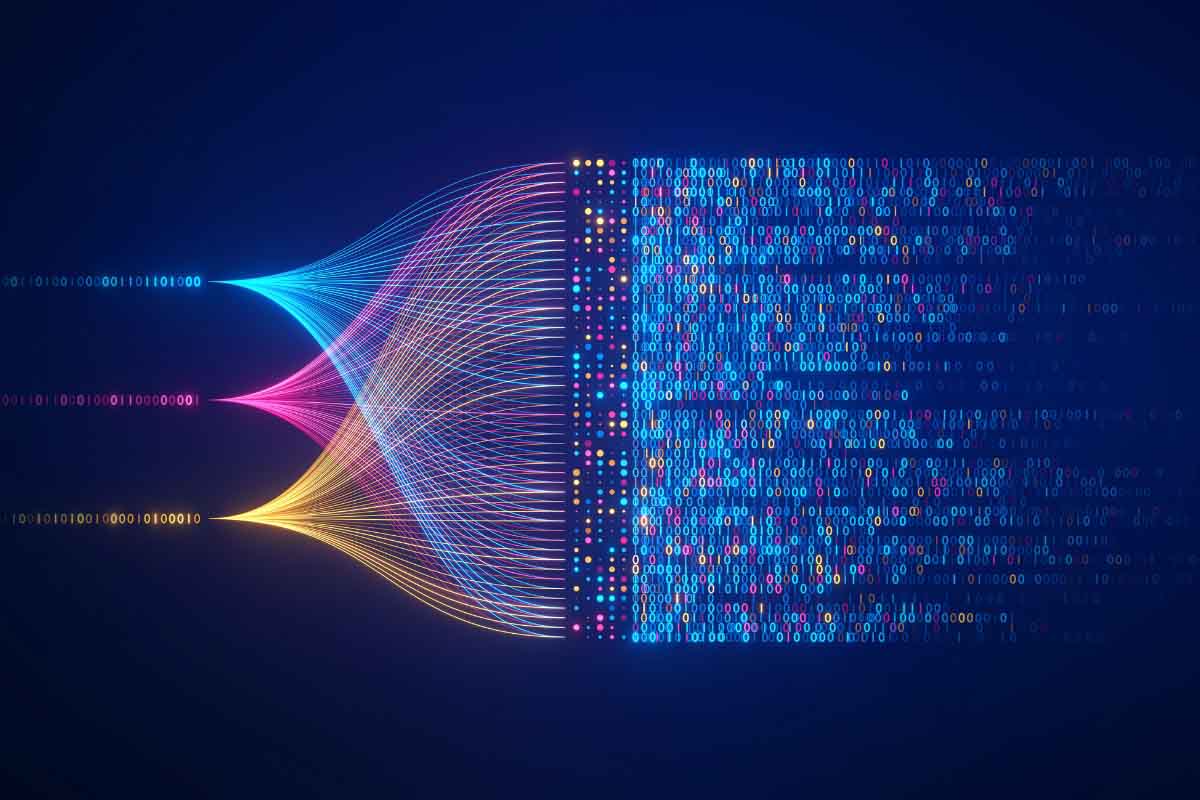ABSTRACT
Many preclinical and clinical studies have examined the potential benefits of ginger extracts for a range of medical disorders. Ginger has been found to reduce both pain and nausea and has therefore also been studied in the context of migraine headache. One randomized controlled trial (RCT) found that ginger was no better than placebo for the prevention of migraine episodes. One meta-analysis (pooled N = 227) found that, relative to placebo, ginger was associated with a higher proportion of patients who were pain free 2 hours after treatment (risk ratio [RR], 1.79; 95% confidence interval [CI], 1.04–3.09; 2 RCTs). In this meta-analysis, relative to placebo, ginger reduced the risk of migraine-related nausea and vomiting (RR, 0.48; 95% CI, 0.30–0.77; 3 RCTs) and was not associated with an increased risk of adverse events (RR, 0.80; 95% CI, 0.46–1.41; 3 RCTs). No other RCT data are available. Such an evidence base is clearly too small for formal recommendations to be possible. It is suggested that raw ginger or proprietary ginger extracts may be useful as a home remedy for patients who experience an episode of migraine and who, for whatever reason, cannot take established first-line treatments for acute migraine. How ginger thus used compares with established treatments for migraine is presently unknown. Finally, it must be remembered that the chemical constituents of ginger will vary across source and extract; so, when an extract of ginger is studied, the findings of the study can be generalized only to that extract and, possibly, to other extracts with a similar composition.
J Clin Psychiatry 2021;82(6):21f14325
To cite: Andrade C. Ginger for migraine. J Clin Psychiatry. 2021;82(6):21f14325.
To share: https://doi.org/10.4088/JCP.21f14325
© Copyright 2021 Physicians Postgraduate Press, Inc.
Ginger (Zingiber officinale) is a plant the underground stem (rhizome) of which is widely used as a pungent spice in cooking, especially in South Asian cuisine. Ginger grows in many parts of the world and has long been used in traditional medicine. In recent years, much preclinical and clinical research has examined the potential of raw ginger, ginger extracts, and ginger constituents in the prevention and treatment of a wide range of medical conditions.
Ginger has many chemical constituents. These include phenolic compounds, terpenes, polysaccharides, lipids, and organic acids, among which 6-shogaol, 6-gingerol, and 10-dehydrogingerdione may be important.1,2 Ginger has antioxidant and anti-inflammatory effects.2–4 It lowers prostaglandin levels.5 It reduces several serum lipid and glycemic measures.6 It has putative vasculoprotective effects.1
Ginger: Clinical Applications
Perhaps the best-known clinical application of ginger is to treat nausea and vomiting associated, for example, with pregnancy,7 chemotherapy,8 postoperative states,9 and perhaps motion sickness.10 Ginger has also been associated with benefits in disorders such as dysmenorrhea,11 but not osteoarthritis,12 that are characterized by pain. Benefits of ginger have also been hypothesized for conditions ranging from allergic rhinitis13 and “dyspepsia”14 to diabetes,15 cardiovascular disease,2 and even cancer.16
Ginger has a speculative role in neuropsychiatry, such as in the dampening of dementia mechanisms.17,18 However, perhaps because it relieves nausea as well as pain, ginger has more recently been studied in the context of migraine.
Migraine
The International Classification of Headache Disorders, Third Edition (ICHD-3),19 was published in January 2018 and is available in full at the website https://ichd-3.org/ (last accessed on November 14, 2021). In the ICHD-3, headache is classified as primary or secondary; primary headache is classified as migraine, tension-type headache, trigeminal autonomic cephalalgias, and other primary headache disorders. Migraine is itself classified into migraine without aura, migraine with aura, chronic migraine, complications of migraine, probable migraine, and episodic syndromes that may be associated with migraine. Four of these categories are further subclassified, and migraine with aura, in fact, goes down to a total of 5 levels of classification.
Migraine is characterized by recurrent headaches that are typically unilateral, pulsating, moderate or severe in intensity, accompanied by nausea, accompanied by intolerance to sound and light, and worsened by routine physical activity.19 Migraine is frequently comorbid with other neuropsychiatric disorders such as depression,20 bipolar disorder,21 panic disorder,22 seizure disorder,23 and movement disorders,24 and migraine is associated with an increased risk of other neuropsychiatric disorders such as stroke25 and dementia.26 Migraine is also associated with a high prevalence of suicide ideation and suicide attempt.27
The management of migraine involves the identification and elimination of individual-specific migraine triggers, the use of medications to treat an episode of headache, and the use of pharmacologic and nonpharmacologic interventions to reduce the frequency of or to prevent future episodes of headache. Examples of triggers are missing meals, intake of caffeine-containing beverages, use of alcohol (especially red wine), and intake of cheese, chocolate, nuts, and dry fruit, among others. Examples of drugs for the treatment of an episode include nonsteroidal anti-inflammatory drugs and triptans, among others. Examples of drugs for the prevention of episodes include β blockers, topiramate, valproate, and antidepressants, among others.28–30
Ginger for Migraine
Ginger has long been recommended as an effective home remedy for the acute treatment of migraine, relieving both headache and the associated nausea. One suggested recipe is to stir half a teaspoon of ground ginger into a glass of water and to drink this “ginger juice”; another is to drink a hot tea made from a teaspoon of freshly ground ginger.31
Ginger has been formally studied in research settings. In this context, in a systematic review and meta-analysis of randomized controlled trials (RCTs), Chen and Cai32 searched electronic databases and reference lists and identified 3 RCTs (pooled N = 227) that studied ginger versus placebo for the treatment of migraine. One industry-funded RCT,33 conducted in the US, examined the therapeutic efficacy of a proprietary formulation of ginger, combined with feverfew (LipiGesic M, PuraMed BioScience, Inc., Schofield, WI), in 60 patients; this formulation was administered sublingually in the dose of 2 “units,” repeated after an hour, if required. An industry-independent RCT,34 conducted in Brazil, examined the benefits of add-on dry ginger extract (400 mg; 5% active gingerols) in 60 patients who received ketoprofen (100 mg) to treat migraine episodes. Another industry-independent RCT,35 also conducted in Brazil, examined the 3-month prophylactic efficacy of dry ginger extract (200 mg thrice daily; 5% active gingerols) in 107 patients.
In the 2 studies that examined therapeutic efficacy, relative to placebo, ginger was found to reduce mean pain scores at 2 hours (mean difference, −1.27; 95% confidence interval [CI], −1.46 to −1.07; 2 RCTs) as well as to increase the proportion of patients who were pain free at 2 hours (risk ratio [RR], 1.79; 95% CI, 1.04–3.09; 2 RCTs). Relative to placebo, ginger halved the risk of migraine-related nausea and vomiting (RR, 0.48; 95% CI, 0.30–0.77; 3 RCTs) and was not associated with an increased risk of adverse events (RR, 0.80; 95% CI, 0.46–1.41; 3 RCTs).
In the single RCT that examined prophylactic efficacy,35 42% vs 39% of ginger versus placebo patients showed 50% or greater reduction in the monthly frequency of migraine episodes; the difference was not statistically significant. Days of pain, days of severe pain, days requiring the use of analgesics, number of migraine episodes, and maximum duration of migraine episodes (all secondary outcomes) also did not differ significantly between ginger and placebo groups.
The meta-analysis32 had important limitations. The therapeutic efficacy of ginger was based on pooling of data from just 2 RCTs, and the significant results of at least 1 analysis, reduction in mean pain scores at 2 hours, should be ignored. This is because, in this analysis, the authors pooled data from a 4-point scale in 1 study33 with data from an apparently 10-point “visual numeric scale” in the other study.34 If data from different instruments are combined in meta-analysis, the pooled estimate should be the standardized mean difference and not the mean difference.36
Clinical Importance
In a systematic review and meta-analysis of 302 community-based studies (pooled N = 6,216,995), the global prevalence of migraine was found to be 11.6%; the prevalence was twice as high in women than in men.37 Although migraine is so common, there is a large treatment gap in primary care.38 This is related to the frequent long delay in the diagnosis of migraine39,40 as well as the delay between the diagnosis of migraine and the starting of preventive treatment.41 As a result, it could be common for affected patients in the community to experience episodes of migraine headache without recourse to recommended pharmacologic relief. In such situations, the availability of a simple home remedy, such as ginger, could be helpful.
The only RCT on the subject found ginger unhelpful as a prophylactic intervention for migraine.35 The only 2 RCTs available for ginger as a treatment for an acute episode found that ginger reduces pain and nausea associated with migraine. On the negative side, one of these RCTs33 examined ginger in combination with feverfew, so the unique contribution of ginger could not be determined. On the positive side, the other RCT34 found that add-on ginger was able to provide benefit over and above the benefit resulting from the use of a first-line treatment, ketoprofen.
Take-Home Message
Raw ginger or commercially marketed ginger extracts may be useful as a home remedy for patients who experience an episode of migraine and who, for whatever reason, do not have access to, cannot take, or will not take established first-line treatments. Whether ginger, used in this fashion, is as good as recommended first-line treatments for acute migraine is unknown. Limited evidence suggests that ginger is ineffective in the prophylaxis of migraine. Formal clinical recommendations cannot be made unless the evidence base is strengthened.
Parting Notes
As already observed, ginger is made up of a number of chemical constituents. We do not know which of these constituents contribute to its beneficial effect in acute migraine. So, if ginger is used as a home remedy, users must be aware that, just as people are different from place to place, the chemical composition of ginger, and hence its efficacy, could vary from source to source. Users would therefore need to determine by trial and error what source and dosing works best for them, assuming that the treatment does work. Two “recipes” for home use were described in an earlier section of this article. Importantly, if a standardized extract of ginger is researched, the conclusions drawn about the efficacy of ginger can only be generalized to that extract and not to extracts with other compositions. These caveats apply to all herbal medicines and not to ginger alone.
Published online: November 30, 2021.
 Each month in his online column, Dr Andrade considers theoretical and practical ideas in clinical psychopharmacology with a view to update the knowledge and skills of medical practitioners who treat patients with psychiatric conditions.
Each month in his online column, Dr Andrade considers theoretical and practical ideas in clinical psychopharmacology with a view to update the knowledge and skills of medical practitioners who treat patients with psychiatric conditions.
Department of Clinical Psychopharmacology and Neurotoxicology, National Institute of Mental Health and Neurosciences, Bangalore, India (candrade@psychiatrist.com).
Financial disclosure and more about Dr Andrade.
References (41)

- Li C, Li J, Jiang F, et al. Vasculoprotective effects of ginger (Zingiber officinale Roscoe) and underlying molecular mechanisms. Food Funct. 2021;12(5):1897–1913. PubMed CrossRef
- Roudsari NM, Lashgari NA, Momtaz S, et al. Ginger: a complementary approach for management of cardiovascular diseases [published online ahead of print August 13, 2021]. Biofactors. doi:10.1002/biof.1777 PubMed CrossRef
- Morvaridzadeh M, Fazelian S, Agah S, et al. Effect of ginger (Zingiber officinale) on inflammatory markers: a systematic review and meta-analysis of randomized controlled trials. Cytokine. 2020;135:155224. PubMed CrossRef
- Morvaridzadeh M, Sadeghi E, Agah S, et al. Effect of ginger (Zingiber officinale) supplementation on oxidative stress parameters: a systematic review and meta-analysis. J Food Biochem. 2021;45(2):e13612. PubMed CrossRef
- Jalali M, Mahmoodi M, Moosavian SP, et al. The effects of ginger supplementation on markers of inflammatory and oxidative stress: a systematic review and meta-analysis of clinical trials. Phytother Res. 2020;34(8):1723–1733. PubMed CrossRef
- Arablou T, Aryaeian N, Valizadeh M, et al. The effect of ginger consumption on glycemic status, lipid profile and some inflammatory markers in patients with type 2 diabetes mellitus. Int J Food Sci Nutr. 2014;65(4):515–520. PubMed CrossRef
- Hu Y, Amoah AN, Zhang H, et al. Effect of ginger in the treatment of nausea and vomiting compared with vitamin B6 and placebo during pregnancy: a meta-analysis. J Matern Fetal Neonatal Med. 2020:1–10. PubMed CrossRef
- Crichton M, Marshall S, Marx W, et al. Efficacy of ginger (Zingiber officinale) in ameliorating chemotherapy-induced nausea and vomiting and chemotherapy-related outcomes: a systematic review update and meta-analysis. J Acad Nutr Diet. 2019;119(12):2055–2068. PubMed CrossRef
- Lu C, Chen X, Yan X, et al. The preventive and relieving effects of ginger on postoperative nausea and vomiting: a systematic review and meta-analysis of randomized controlled trials. Int J Nurs Stud. 2021;125:104094. PubMed CrossRef
- Lien HC, Sun WM, Chen YH, et al. Effects of ginger on motion sickness and gastric slow-wave dysrhythmias induced by circular vection. Am J Physiol Gastrointest Liver Physiol. 2003;284(3):G481–G489. PubMed CrossRef
- Xu Y, Yang Q, Wang X. Efficacy of herbal medicine (cinnamon/fennel/ginger) for primary dysmenorrhea: a systematic review and meta-analysis of randomized controlled trials. J Int Med Res. 2020;48(6):300060520936179. PubMed CrossRef
- Araya-Quintanilla F, Gutierrez-Espinoza H, Munoz-Yanez MJ, et al. Effectiveness of ginger on pain and function in knee osteoarthritis: a PRISMA systematic review and meta-analysis. Pain Physician. 2020;23(2):E151–E161. PubMed CrossRef
- Yamprasert R, Chanvimalueng W, Mukkasombut N, et al. Ginger extract versus Loratadine in the treatment of allergic rhinitis: a randomized controlled trial. BMC Complement Med Ther. 2020;20(1):119. PubMed CrossRef
- Ghayur MN, Gilani AH. Pharmacological basis for the medicinal use of ginger in gastrointestinal disorders. Dig Dis Sci. 2005;50(10):1889–1897. PubMed CrossRef
- Hajimoosayi F, Jahanian Sadatmahalleh S, Kazemnejad A, et al. Effect of ginger on the blood glucose level of women with gestational diabetes mellitus (GDM) with impaired glucose tolerance test (GTT): a randomized double-blind placebo-controlled trial. BMC Complement Med Ther. 2020;20(1):116. PubMed CrossRef
- Zadorozhna M, Mangieri D. Mechanisms of chemopreventive and therapeutic proprieties of ginger extracts in cancer. Int J Mol Sci. 2021;22(12):6599. PubMed CrossRef
- Moon M, Kim HG, Choi JG, et al. 6-Shogaol, an active constituent of ginger, attenuates neuroinflammation and cognitive deficits in animal models of dementia. Biochem Biophys Res Commun. 2014;449(1):8–13. PubMed CrossRef
- Talebi M, İlgün S, Ebrahimi V, et al. Zingiber officinale ameliorates Alzheimer’s disease and cognitive impairments: lessons from preclinical studies. Biomed Pharmacother. 2021;133:111088. PubMed CrossRef
- Headache Classification Committee of the International Headache Society (IHS). The International Classification of Headache Disorders, 3rd edition (beta version). Cephalalgia. 2018;38(1):1–211. PubMed CrossRef
- Amoozegar F. Depression comorbidity in migraine. Int Rev Psychiatry. 2017;29(5):504–515. PubMed CrossRef
- Saunders EF, Nazir R, Kamali M, et al. Gender differences, clinical correlates, and longitudinal outcome of bipolar disorder with comorbid migraine. J Clin Psychiatry. 2014;75(5):512–519. PubMed CrossRef
- Smitherman TA, Kolivas ED, Bailey JR. Panic disorder and migraine: comorbidity, mechanisms, and clinical implications. Headache. 2013;53(1):23–45. PubMed CrossRef
- Demarquay G, Rheims S. Relationships between migraine and epilepsy: pathophysiological mechanisms and clinical implications. Rev Neurol (Paris). 2021;177(7):791–800. PubMed CrossRef
- d’Onofrio F, Barbanti P, Petretta V, et al. Migraine and movement disorders. Neurol Sci. 2012;33(suppl 1):S55–S59. PubMed CrossRef
- Øie LR, Kurth T, Gulati S, et al. Migraine and risk of stroke. J Neurol Neurosurg Psychiatry. 2020;91(6):593–604. PubMed CrossRef
- Wang L, Wu JC, Wang FY, et al. Meta-analysis of association between migraine and risk of dementia [published online ahead of print September 15, 2021]. Acta Neurol Scand. doi:10.1111/ane.13528 PubMed CrossRef
- Pei JH, Wang XL, Yu Y, et al. Prevalence of suicidal ideation and suicide attempt in patients with migraine: a systematic review and meta-analysis. J Affect Disord. 2020;277:253–259. PubMed CrossRef
- Ashina M. Migraine. N Engl J Med. 2020;383(19):1866–1876. PubMed CrossRef
- Eigenbrodt AK, Ashina H, Khan S, et al. Diagnosis and management of migraine in ten steps. Nat Rev Neurol. 2021;17(8):501–514. PubMed CrossRef
- Hindiyeh NA, Zhang N, Farrar M, et al. The role of diet and nutrition in migraine triggers and treatment: a systematic literature review. Headache. 2020;60(7):1300–1316. PubMed CrossRef
- Reader’s Digest. 1801 Home Remedies. The Reader’s Digest Association, Inc.; 2004.
- Chen L, Cai Z. The efficacy of ginger for the treatment of migraine: a meta-analysis of randomized controlled studies. Am J Emerg Med. 2021;46:567–571. PubMed CrossRef
- Cady RK, Goldstein J, Nett R, et al. A double-blind placebo-controlled pilot study of sublingual feverfew and ginger (LipiGesic M) in the treatment of migraine. Headache. 2011;51(7):1078–1086. PubMed CrossRef
- Martins LB, Rodrigues AMDS, Rodrigues DF, et al. Double-blind placebo-controlled randomized clinical trial of ginger (Zingiber officinale) addition in migraine acute treatment. Cephalalgia. 2019;39(1):68–76. PubMed CrossRef
- Martins LB, Rodrigues AMDS, Monteze NM, et al. Double-blind placebo-controlled randomized clinical trial of ginger (Zingiber officinale ) in the prophylactic treatment of migraine. Cephalalgia. 2020;40(1):88–95. PubMed CrossRef
- Andrade C. Mean difference, standardized mean difference (SMD), and their use in meta-analysis: as simple as it gets. J Clin Psychiatry. 2020;81(5):20f13681. PubMed CrossRef
- Woldeamanuel YW, Cowan RP. Migraine affects 1 in 10 people worldwide featuring recent rise: a systematic review and meta-analysis of community-based studies involving 6 million participants. J Neurol Sci. 2017;372:307–315. PubMed CrossRef
- Minen MT, Robbins MS, Loder E, et al. Addressing the crisis of diagnosis and management of migraine in primary care: a summary of the American Headache Society FrontLine Primary Care Advisory Board. Headache. 2020;60(5):1000–1004. PubMed CrossRef
- Viticchi G, Silvestrini M, Falsetti L, et al. Time delay from onset to diagnosis of migraine. Headache. 2011;51(2):232–236. PubMed CrossRef
- Al-Hashel JY, Ahmed SF, Alroughani R, et al. Migraine misdiagnosis as a sinusitis, a delay that can last for many years. J Headache Pain. 2013;14(1):97. PubMed CrossRef
- Dekker F, Dieleman JP, Neven AK, et al. Preventive treatment for migraine in primary care, a population-based study in the Netherlands. Cephalalgia. 2013;33(14):1170–1178. PubMed CrossRef
This PDF is free for all visitors!




